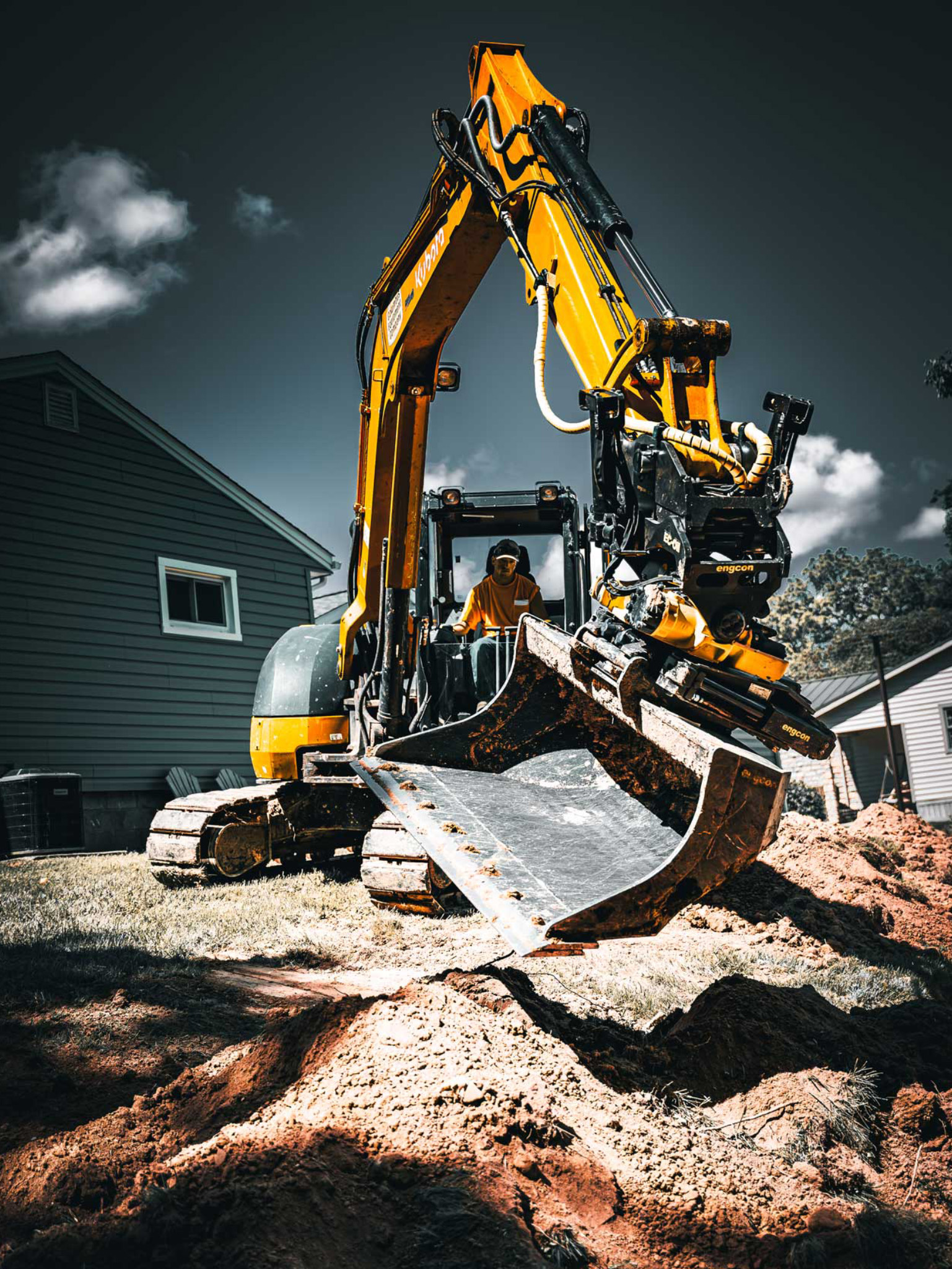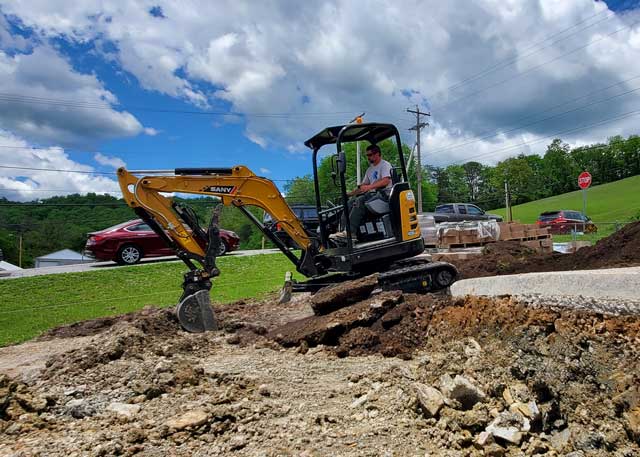Budget Friendly Lancaster Excavation - High Quality Excavation at Competitive Prices
Budget Friendly Lancaster Excavation - High Quality Excavation at Competitive Prices
Blog Article
Thorough Expedition: The Science Behind Superior Excavation Practices
From ancient hand devices to contemporary hydraulic excavators, the evolution of excavation techniques has been a testament to human ingenuity and technological improvements. What really establishes premium excavation practices apart is a deep understanding of geological principles, paired with the utilization of sophisticated tools and methodologies.
Advancement of Excavation Techniques
Throughout history, the evolution of excavation strategies has played an important function in progressing building practices and archaeological explorations. From the primary tools utilized by our ancestors to the innovative equipment employed in modern times, the progression of excavation techniques has considerably changed how we come close to different tasks.
In old times, hand-operated labor with standard devices such as wheelbarrows, shovels, and pickaxes was the main technique of excavation. This labor-intensive procedure limited the deepness and extent of excavations, usually leading to slow-moving progress and limited access to particular websites. Nonetheless, as people progressed, so did the devices and methods used for excavation.
The Industrial Transformation noted a transforming factor in excavation exercise with the intro of steam-powered machinery. This advancement transformed the field, permitting for faster and much more substantial excavations. In contemporary times, technology plays a critical role in excavation, with improvements like general practitioner systems, drones, and 3D scanning improving accuracy and efficiency in the area. The advancement of excavation methods proceeds to form the way we construct, discover, and understand the globe around us.
Role of Modern Technology in Excavation

The integration of innovative technology has essentially revolutionized the field of excavation, boosting precision and effectiveness to unmatched degrees. Among the crucial technical advancements that has actually significantly influenced excavation methods is the utilization of general practitioner systems. These systems enable precise mapping of excavation sites, allowing drivers to properly locate below ground energies and frameworks. In addition, using telematics in excavation devices has made it possible for real-time surveillance of maker performance, bring about proactive upkeep and increased functional performance.
In addition, the advent of 3D modeling and simulation software application has structured the preparation process for excavation projects. Engineers and drivers can currently envision the entire excavation process prior to damaging ground, enhancing and identifying potential challenges operations. Combined with this, the implementation of drones in excavation activities has actually assisted in airborne surveys, volumetric measurements, and site evaluations with unparalleled speed and accuracy.
Geological Principles in Excavation
An understanding of geological concepts is necessary for ensuring the architectural stability and security of excavation sites. Geological elements play a critical function in establishing the expediency and safety and security of excavation jobs (lancaster excavation). One essential geological concept to consider is the sort of dirt or rock present at the site. Various soil types, such as clay, crushed rock, or sand, have differing levels of stability and call for various excavation methods. For instance, cohesive soils like clay may require additional assistance to avoid collapses, while sandy soils might be prone to disintegration during excavation.
Additionally, the geological framework of the area, including faults, cracks, and rock formations, need to be very carefully examined to recognize prospective threats and challenges. Excavating near mistake lines or unsteady rock formations can cause visit the site instability and potential risks. By performing comprehensive geological studies and evaluation, excavators and designers can establish approaches to reduce dangers and make certain the successful completion of excavation jobs. Inevitably, incorporating geological principles into excavation techniques is critical for attaining risk-free, effective, and sustainable results.

Newest Tools for Excavation
In the realm of excavation techniques, contemporary technologies in devices have reinvented the effectiveness and precision of excavation processes. One of the most recent devices making waves in the market is making use of drones geared up with sophisticated imaging technology. These drones can provide detailed aerial studies of excavation websites, supplying real-time data on topography and possible hazards. This details help in much better preparation and decision-making during the excavation procedure.
An additional cutting-edge device acquiring appeal is the application of 3D printing modern technology for creating custom excavation equipment. This permits the manufacturing of specialized tools that are tailored to the details requirements of a job, increasing performance and minimizing downtime.
Moreover, improvements in materials scientific research have led to the development of more powerful and a lot more long lasting excavation tools. septic ohio. Tungsten carbide-tipped excavator accessories, for instance, deal exceptional efficiency in tough ground problems, improving productivity on-site
Scientific research's Effect on Excavation Practices

In addition, scientific research study on soil mechanics and geotechnical engineering has offered useful insights right into dirt habits, permitting excavation professionals to make educated choices pertaining to excavation approaches and dirt stabilization methods. In general, science get more continues to drive development and renovation in excavation practices, making excavation projects much more reliable, economical, and lasting.

Conclusion
To conclude, the development of excavation techniques has actually been substantially affected by advancements in technology and a much deeper understanding of geological principles. The latest tools and tools used in excavation have boosted performance and accuracy in the area. The application of scientific knowledge has considerably boosted excavation practices, causing extra efficient and lasting techniques for excavating various types of products.
In the world of excavation methods, modern developments in devices have changed the efficiency and precision of excavation procedures. By leveraging scientific concepts, the excavation market has been able to considerably boost efficiency, precision, and safety and security in excavation procedures. GPR allows excavation groups to non-invasively scan and map subsurface frameworks, energies, and possible risks, allowing them to intend excavation projects with better accuracy and reduced risk of accidents.
Furthermore, clinical research on soil auto mechanics and geotechnical design has actually provided beneficial understandings right into soil habits, enabling excavation experts to make informed decisions regarding excavation techniques and dirt stabilization strategies. In general, article science continues to drive advancement and renovation in excavation methods, making excavation tasks more effective, cost-effective, and sustainable.
Report this page